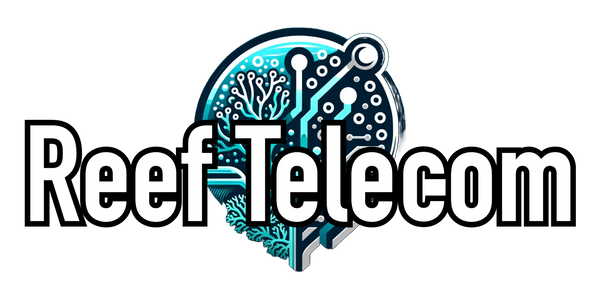
Whale Shark Conservation: How Technology and Reef Telecom Are Making Waves
Share
Whale Shark Conservation: How Technology and Reef Telecom Are Making Waves
Whale sharks—the gentle giants of the sea—are now officially classified as Endangered by the IUCN Red List, with population declines of over 50% in just three generations. As marine conservation becomes critical in 2025, technology is emerging as a game-changer for protecting whale sharks and restoring ocean health.
Why Whale Sharks Matter
Whale sharks (Rhincodon typus) are the largest fish on Earth, playing a vital role in the balance of ocean ecosystems. However, threats like overfishing, ship strikes, plastic pollution, and climate change are pushing them toward extinction. Recent conservation efforts include marine sanctuaries, international law protections (such as CITES), and community eco-tourism, all designed to provide safe havens and incentives for protection.
How Technology Powers Conservation
1. AI & Digital Citizen Science
- New platforms such as sharkPulse use artificial intelligence to scan millions of online images, tracking whale shark sightings worldwide in real-time. This data revolution enables scientists to quickly locate and monitor whale sharks, better understand their migration, and implement effective protection.
- Citizen scientists and divers now upload photos to global databases, helping identify and map individual whale sharks—making public participation key to data collection.
2. Marine Wildlife Corridors & Monitoring
- Projects run by organizations like Shark Team One apply Microsoft Azure AI to automatically classify photos showing injuries from ship strikes and fishing gear. The output helps inform policy, design marine protected areas, and train volunteers—saving both whale sharks and local livelihoods.
- Technology-driven patrols with satellite AI and vessel tracking are key to enforcing marine reserves and catching illegal fishing activity, allowing authorities to focus resources for maximum impact.
3. The Circular Economy: Sustainable Telecom
- Reef Telecom promotes a circular economy by supplying high-quality refurbished telecom equipment, reducing the environmental footprint of new gear manufacturing. Reusing tech lowers carbon emissions, decreases resource extraction, and helps build resilient ocean ecosystems—providing direct climate benefits that align with global conservation goals.
- Every sustainable purchase—from IP phones to switches—cuts e-waste and supports healthier oceans, linking Reef Telecom’s mission with a cleaner planet.
Reef Telecom’s Conservation Commitment
Reef Telecom proudly supports ocean organizations including Ocearch, Coral Restoration Foundation, and Ocean Conservancy, investing in both direct marine conservation and indirect climate action. By choosing refurbished network hardware, buyers and businesses not only save money, but also help fund vital efforts to keep whale shark populations thriving.
What You Can Do
- Support NGOs like WWF, Marine Megafauna Foundation, or Shark Trust.
- Choose refurbished technology to lower environmental impact, following Reef Telecom’s model.
- Reduce single-use plastic and advocate for stronger marine protections.
- Share and raise awareness with hashtags like #InternationalWhaleSharkDay and #SaveOurSharks.
This International Whale Shark Day and throughout 2025, every action—from deploying sustainable telecom gear to supporting AI-powered marine science—helps ensure the survival of our planet’s most impressive ocean giants.
